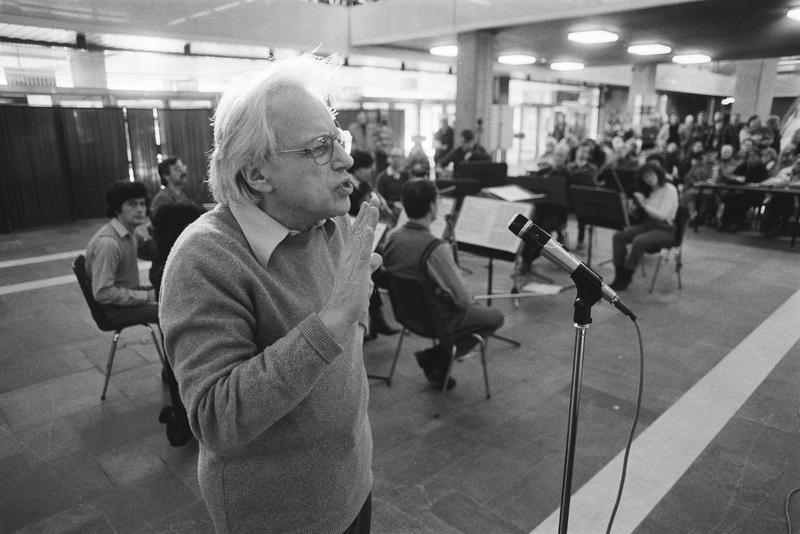 NYPR Archives & Preservation
NYPR Archives & Preservation
An Evening with György Ligeti

In November 1986, Hungarian composer György Ligeti paid a rare visit to New York to receive the prestigious Grawemeyer Award, the largest composition prize awarded at the time. (In a New York Times interview Ligeti described the award, with characteristic irony, as “a kind of Nobel Prize for music.”) The visit also prompted a concert of two recent pieces by Ligeti at Merkin Hall on Wednesday, November 12, 1986, broadcast by WNYC on February 4, 1987, which can be heard above. It was an interesting time in Ligeti’s career: a few years earlier, the composer — best-known at the time for his icy 1961 Atmosphères, used to striking effect in Stanley Kubrick’s 2001: A Space Odyssey—had experienced a mid-life creative crisis of sorts. From then on, his music had made a decisive move away from the overtly modernist, cerebral music of Atmosphères and toward a more expressive, colorful, though nonetheless complex, sound. The pieces in this concert fully reflect this new aesthetic, and include the New York premiere of the Études pour piano, premier livre and the Brahms-inspired Trio for Violin, Horn and Piano.
In 1983, Ligeti described his earlier pieces as “crystalline in nature,” and his more recent work as “much more vegetative and proliferating.” This new music incorporated a broad range of influences, from the mechanical piano music of the American outsider Conlon Nancarrow, to the percussive minimalism of Steve Reich, to the polyphonic “hocket” singing of the Pygmies of central Africa. In the program notes for the concert at Merkin Hall, Ligeti also mentions artists M.C. Escher and Saul Steinberg, and writers like Jorge Luis Borges and Franz Kafka as influences on the “intellectual environment in which I work as a composer... In my music one finds neither that which one might call the ‘scientific’ nor the ‘mathematical’ but rather a unification of construction with poetic, emotional imagination.”
Sandwiched between the performances, the composer gives a brief and (if you’re into this sort of thing) entertaining explanation of the composition techniques used to create the Études. In his humble, humorous way, Ligeti — with assistance from Banfield — makes the advanced musical theory underlying these dense, polyrhythmic pieces seem simple and even approachable. In a refreshingly casual style, the composer reminds us that even the most advanced technique and theory, like the most advanced technologies, are tools, not ends in themselves.
Program:
“An Evening with György Ligeti”
Wednesday, November 12, 1986 at 8:30 pm
Merkin Concert Hall, Abraham Goodman House
- Etudes for Solo Piano, first book (1985) (New York Premiere) - Volker Banfield, Piano
1. Desordre
2. Cordes vides
3. Touches bloquees
4. Fanfares
5. Arc-en-ciel
6. Automne a Varsovie - György Ligeti on Etudes for Solo Piano
- Etudes for Solo Piano, first book, repeated - Volker Banfield, Piano
- Trio for Violin, Horn and Piano (1982) - Volker Banfield, Piano; Robin Graham, Horn; Saschko Gawriloff, Violin.
1. Andantino con tenerezza
2. Vivacissimo molto ritmico
3. Alla marcia
4. Lamento adagio